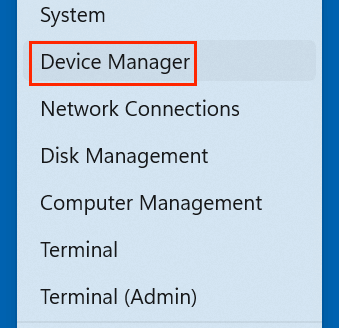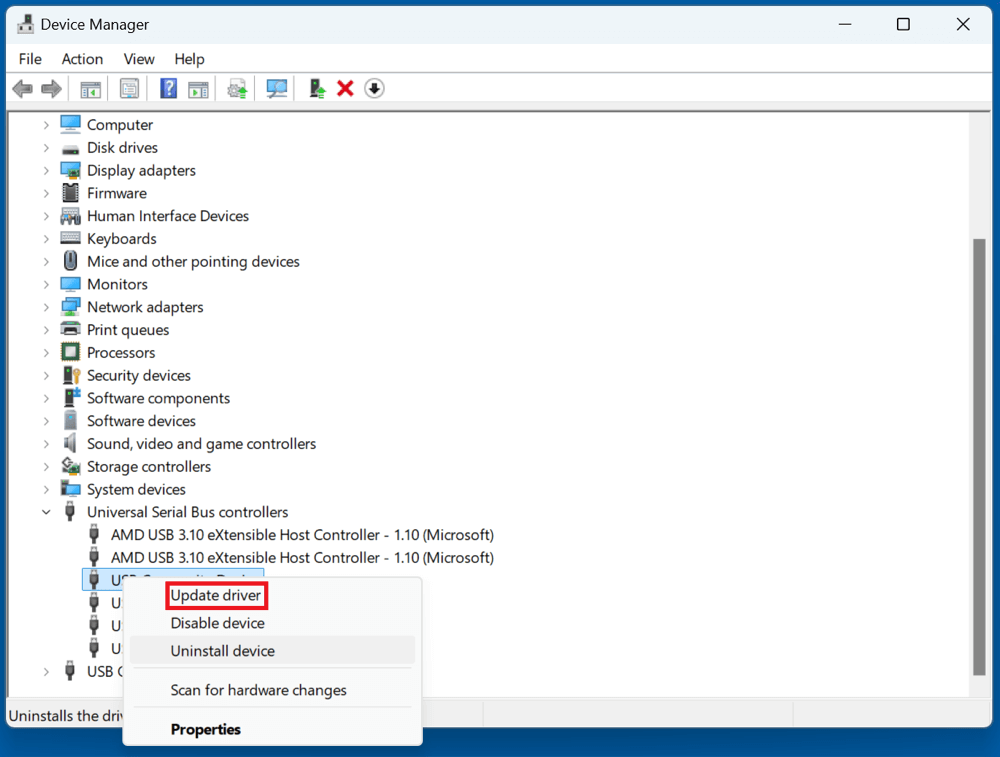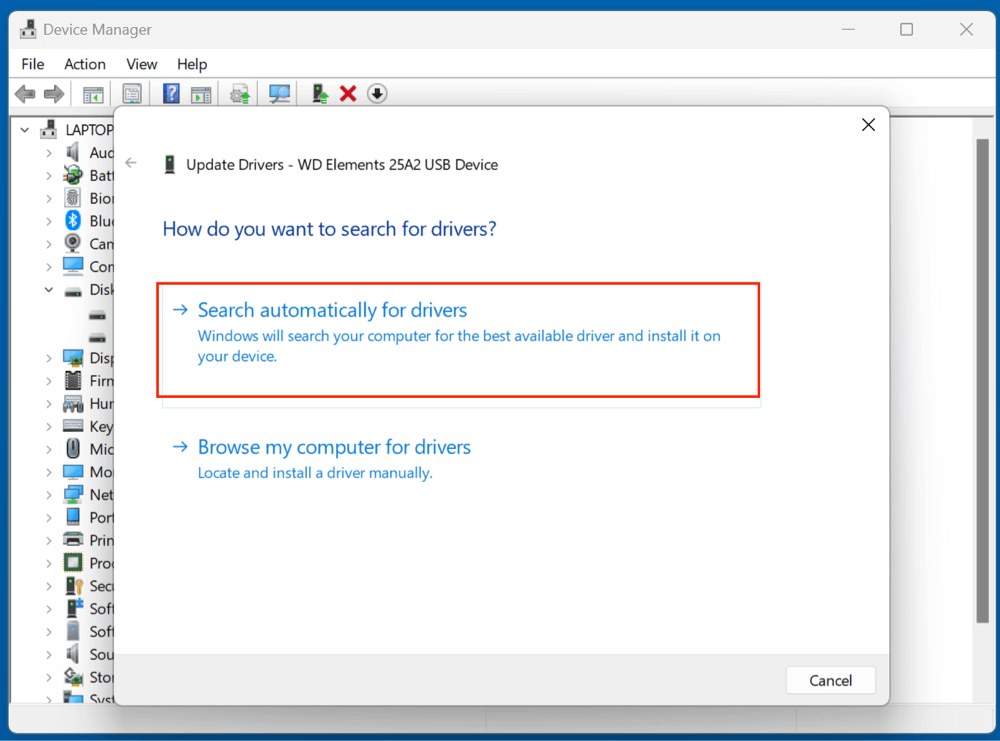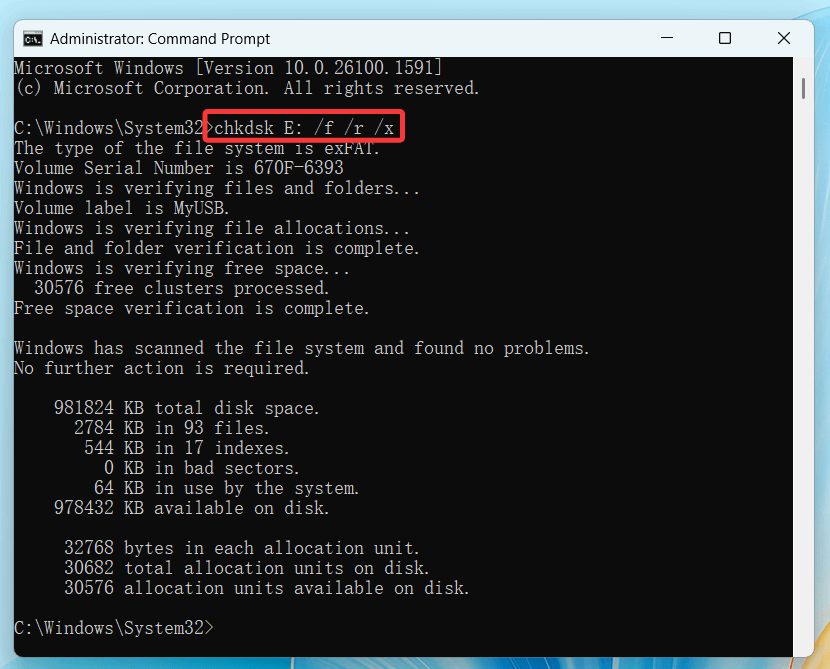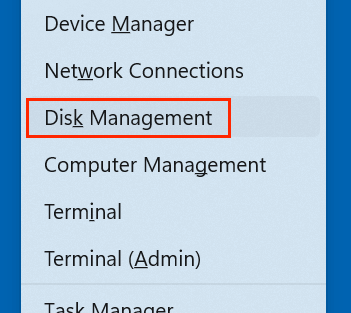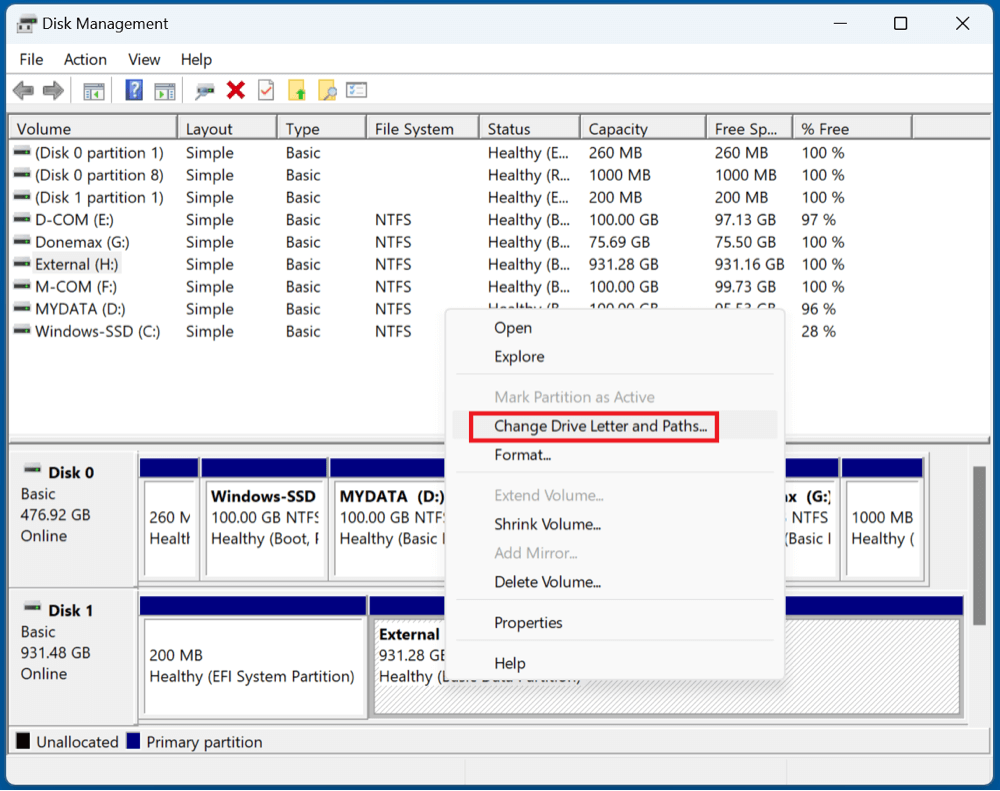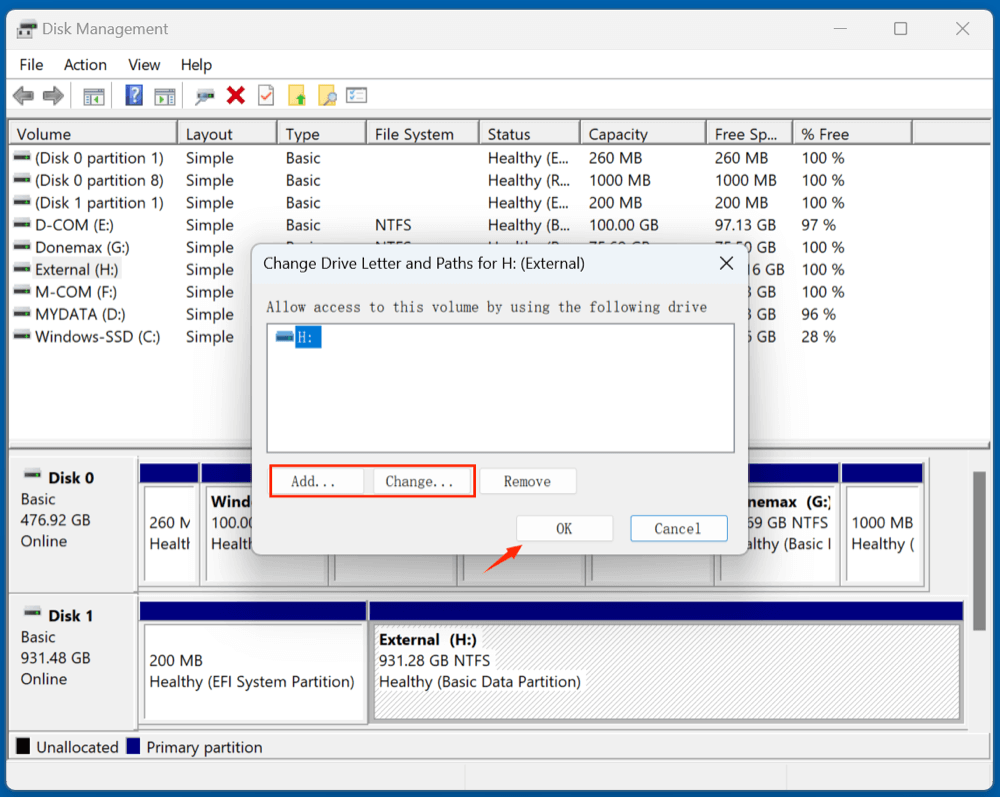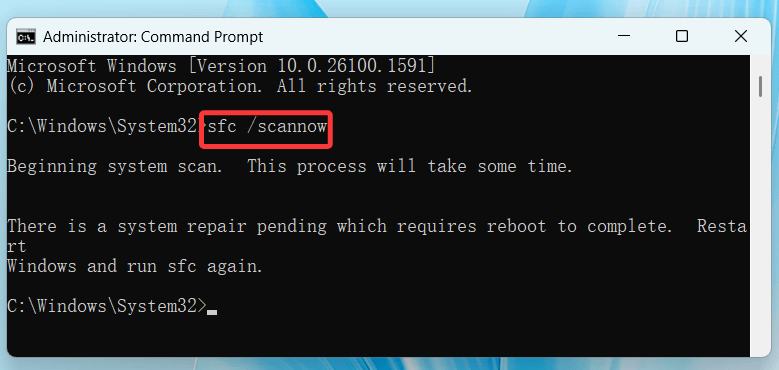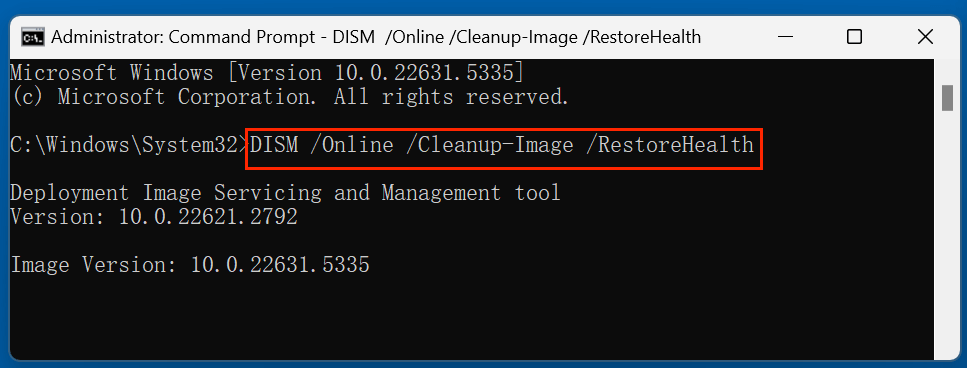Before we start: Donemax Data Recovery is a powerful data recovery program. It supports to recover inaccessible or lost data from a device which becomes inaccessible due to I/O error. This data recovery program also can help you repair damaged external hard drive, USB flash drive, SD card, etc.
PAGE CONTENT:
An I/O device error can be frustrating, especially when it prevents you from accessing your important files or using your external devices. This error commonly appears with hard drives, USB flash drives, SD cards, CD/DVD drives, and other storage devices. Fortunately, many I/O device errors can be resolved through a series of systematic troubleshooting steps.
This article offers an in-depth guide to help you understand the root causes of I/O device errors and how to fix them using beginner- and expert-level solutions. It also includes specific fixes for different types of storage devices, along with preventive measures and data recovery advice.
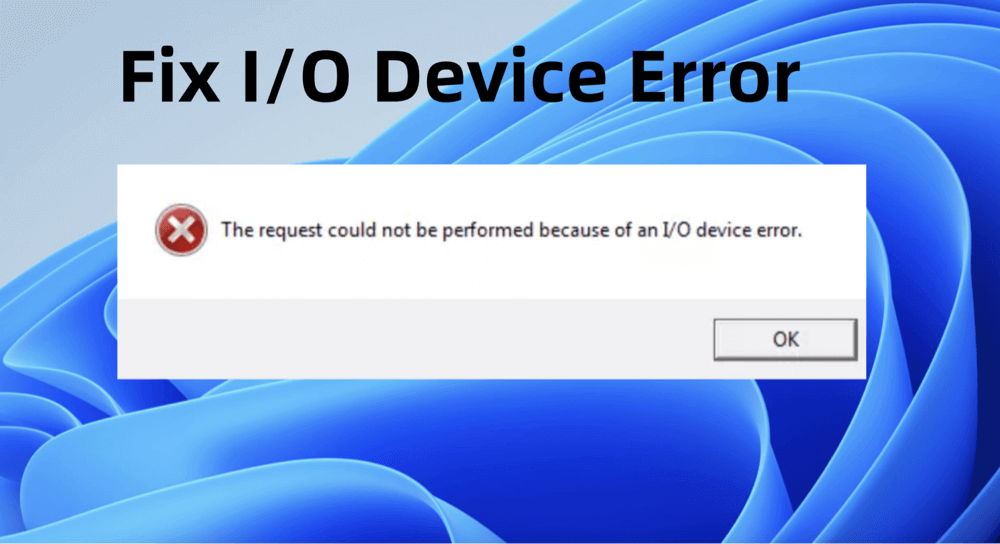
What Is an I/O Device Error?
When the operating system cannot read or write data to a device, it is known as an I/O (Input/Output) device error. Windows users may encounter this error with the message:
"The request could not be performed because of an I/O device error."
This type of error usually occurs during file transfer, device formatting, or when trying to access a storage device. It may render the device temporarily or permanently inaccessible, depending on the severity.
Common Scenarios When I/O Device Error Appears:
- Attempting to open or transfer files from an external hard drive or USB flash drive
- Inserting an SD card or CD/DVD into your computer
- Running system backup or imaging tools
- Launching a program installed on an external device
- Using older devices on newer operating systems
What Causes I/O Device Errors?
Understanding the cause can help you apply the right fix. The most common causes include:
1. Faulty Cables or Loose Connections
Physical problems like broken USB ports, loose cables, or damaged connectors can lead to communication failure between the OS and the device.
2. Outdated or Corrupted Device Drivers
Incompatible or outdated drivers can prevent proper communication with the hardware.
3. Disk Errors or Bad Sectors
Corrupted sectors on the storage device can cause read/write errors and make data inaccessible.
4. Incorrect Transfer Mode in BIOS or OS
The mode used to transfer data (e.g., PIO or DMA) may be incorrectly set, causing errors.
5. File System Corruption
Unsupported or corrupted file systems on the device may trigger I/O errors when Windows attempts to access them.
6. Physical Damage to the Storage Device
Wear and tear or accidental drops may physically damage the internal components of a device, making it unreadable.
Quick Fixes You Should Try First:
Before diving into software tools or complex diagnostics, start with these simple steps:
1. Reconnect the Device
- Unplug the device and reconnect it securely.
- Use a different USB port or try connecting the device to another computer.
2. Replace the Cable
Try a different USB, SATA, or power cable to rule out cable damage.
3. Restart the Computer
A simple reboot can often clear temporary system errors that might cause I/O issues.
4. Clean the Device and Port
Dust or corrosion on the connectors can cause intermittent contact. Clean both the device port and your computer's input port with compressed air or a soft cloth.
Software-Based Fixes for I/O Device Errors
If physical troubleshooting doesn't resolve the issue, move on to software-based solutions.
1. Update or Reinstall Device Drivers
Corrupted or outdated drivers can prevent the OS from interacting with the device.
Steps:
- Select Device Manager by performing a right-click on the Start button.
![recover data from a device which has I/O device error]()
- Look for the malfunctioning item under Universal Serial Bus controllers or Disk drives.
- Select "Update driver" from the right-click menu.
![recover data from a device which has I/O device error]()
- Select Search automatically for drivers.
![recover data from a device which has I/O device error]()
If that does not help, try Uninstall device and reboot your PC. Windows will reinstall the driver automatically.
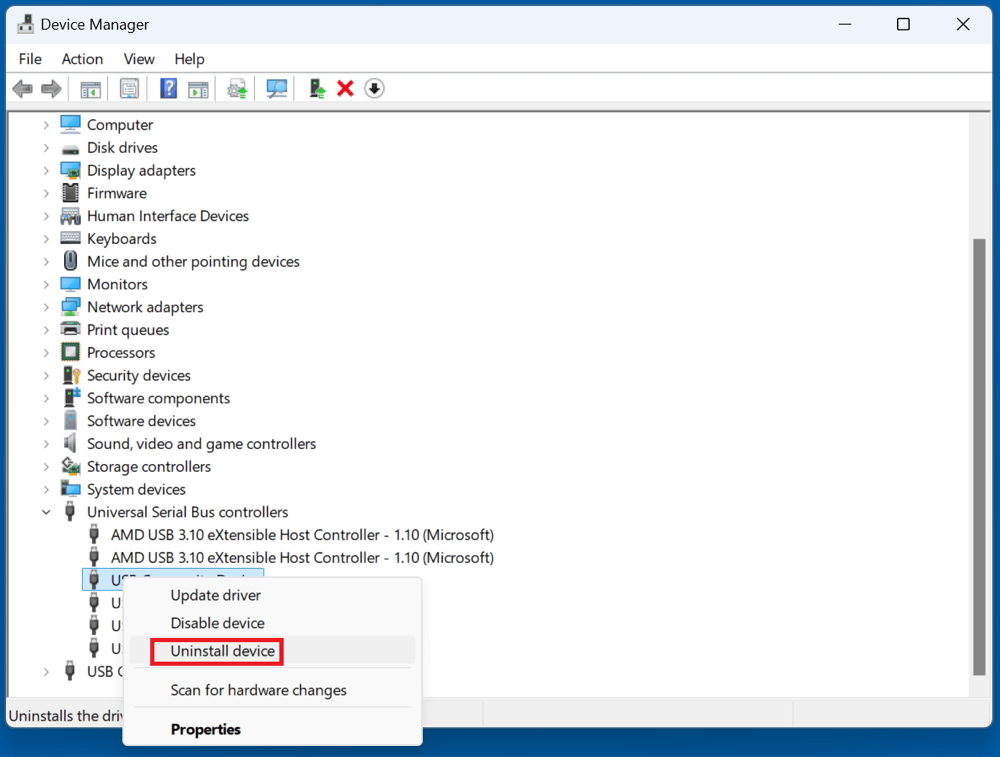
2. Run CHKDSK to Scan and Repair the Drive
CHKDSK is a command-line utility that checks for bad sectors and logical errors.
Steps:
- Choose Command Prompt (Admin) by pressing Windows + X.
- Type the below command:
chkdsk X: /f /r /x
![recover data from a device which has I/O device error]()
(Replace "X" with your device's drive letter.)
- Hit Enter and watch as the scan finishes.
This may take time depending on the device size and number of errors.
3. Use Disk Management to Assign a New Drive Letter
Sometimes, the device may not show up correctly due to a conflicting or missing drive letter.
Steps:
- Press Windows + X to choose Disk Management.
![recover data from a device which has I/O device error]()
- Find the affected device.
- Choose Change Drive Letter and Paths with a right-click.
![recover data from a device which has I/O device error]()
- Click Change or Add to assign a new drive letter and then click OK.
![recover data from a device which has I/O device error]()
4. Run System File Checker and DISM
If the issue stems from corrupted system files, use SFC and DISM tools.
Steps:
- Launch Command Prompt (Admin).
- Type:
sfc /scannow
![recover data from a device which has I/O device error]()
Wait for it to complete.
- Then run:
DISM /Online /Cleanup-Image /RestoreHealth
![recover data from a device which has I/O device error]()
These tools repair core Windows files that may interfere with device operation.
Advanced Troubleshooting Techniques
If none of the above methods work, try more advanced diagnostics.
1. Boot into Safe Mode
Safe Mode loads Windows with minimal drivers, helping to isolate software conflicts.
Steps:
- To access the Boot tab, press Windows + R, type msconfig.
- After selecting Safe Boot > Minimal, restart.
Retry accessing the device in Safe Mode.
2. Check Event Viewer for Disk Errors
Windows logs system issues in the Event Viewer.
Steps:
- Press Windows + X > Event Viewer.
- Expand Windows Logs > System.
- Look for errors from "Disk" or "atapi" sources for details about the issue.
- 3. Update BIOS or Chipset Drivers
Old BIOS or chipset drivers may not fully support newer storage devices.
- Go to the website of the maker of your laptop or motherboard.
- Install the most recent chipset and BIOS drivers after downloading them.
- Carefully follow installation instructions (BIOS updates are risky if interrupted).
4. Use Third-Party Diagnostic Tools
You can assess the health of your device using utilities like:
- CrystalDiskInfo – Provides health status for HDD/SSD.
- SeaTools (by Seagate) – Works with most storage drives.
- WD Drive Utilities – For Western Digital drives.
These tools may identify failing hardware or suggest firmware updates.
Fix I/O Errors for Specific Devices
Different devices may require specific solutions.
1. External Hard Drives & SSDs
- Always eject safely before unplugging.
- Use manufacturer diagnostic tools.
- Reformat using Disk Management if unrecoverable (backup first if possible).
2. USB Flash Drives
- Try using a USB 2.0 port if USB 3.0 doesn't work.
- Reformat using FAT32 or exFAT if corrupted.
- Use recovery software before formatting.
3. SD Cards
- Use a card reader instead of a built-in slot.
- Check lock switch on the card.
- Use chkdsk or SD card formatter tools.
4. CD/DVD Drives
- Clean the disc and lens with soft cloth.
- Try another disc to rule out damage.
- Update the optical drive firmware if available.
Recover Data from a Device with I/O Error
If the device is still accessible intermittently, recover your data before attempting full repairs.
Donemax Data Recovery is a powerful data recovery tool. It offers deep scan technology and ensures finding every recoverable file.
Step 1. Download and install Donemax Data Recovery on your computer and ensure the failed device is connected to your computer.
Step 2. Open Donemax Data Recovery, select the I/O error device to start data recovery.
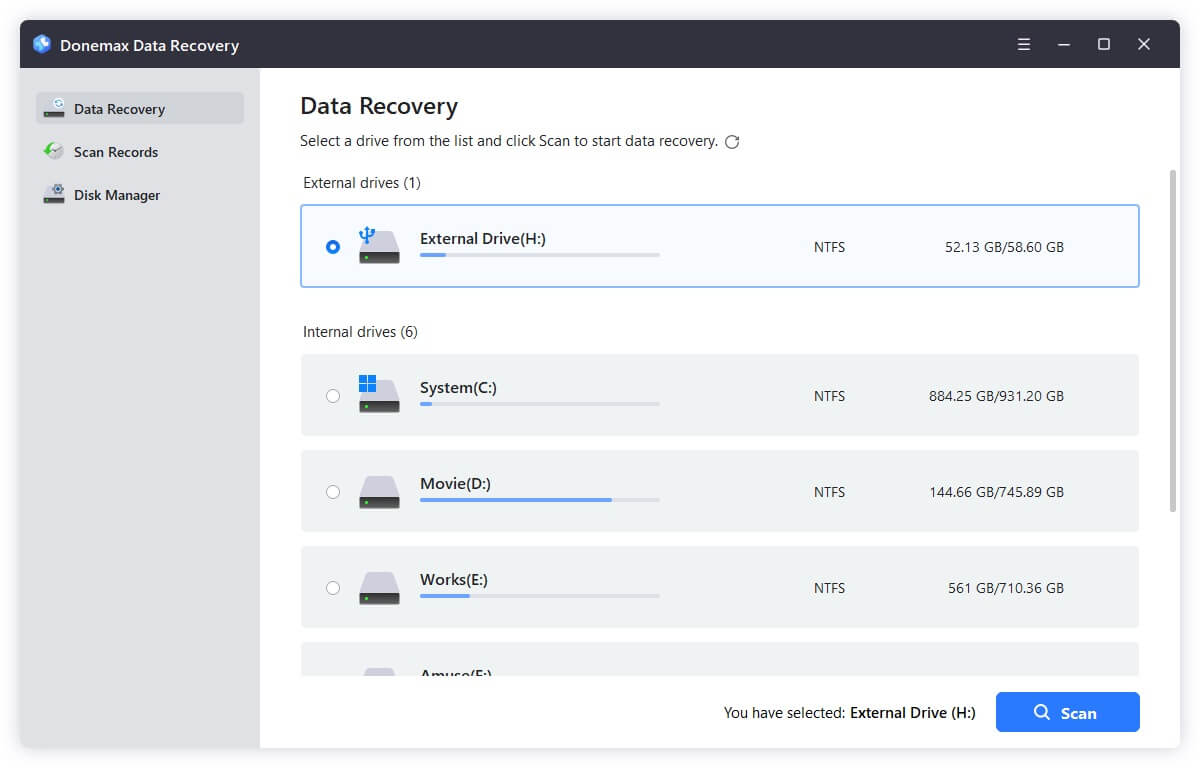
Step 3. Click on Scan button to deeply scan the device and find all recoverable files including existing files, inaccessible files, deleted/formatted/lost files, etc.
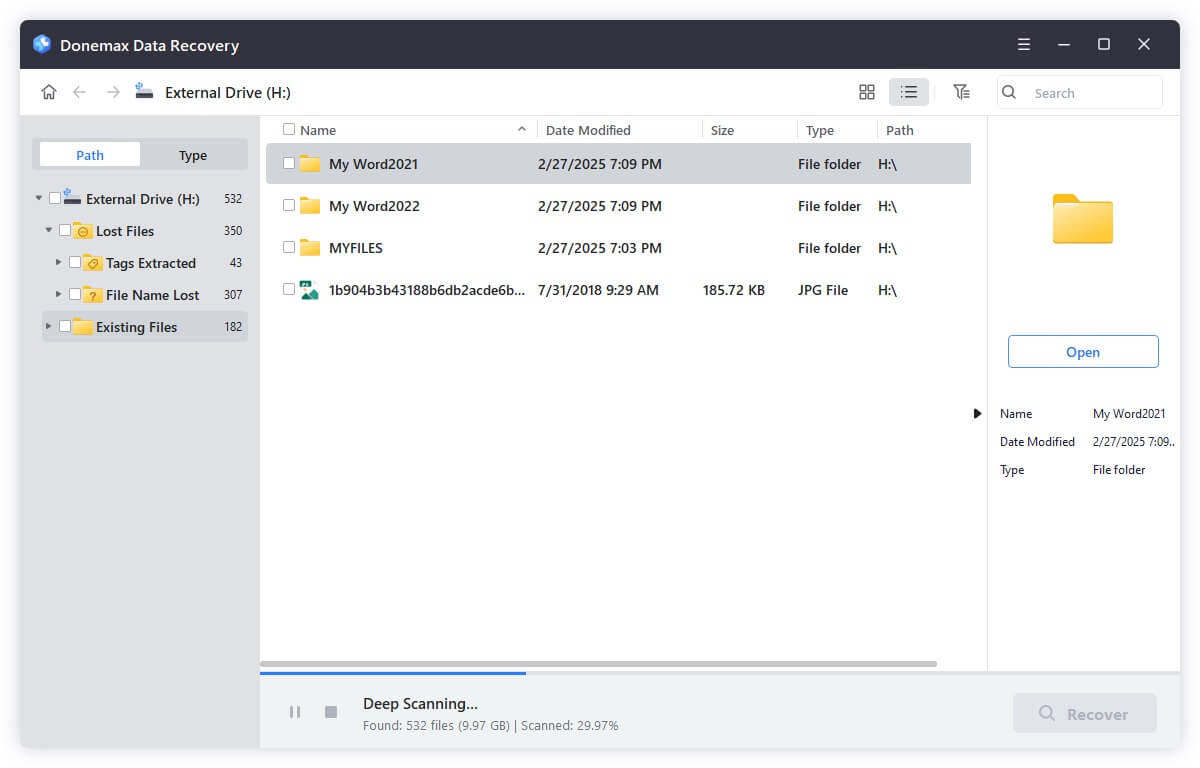
Step 4. After scanning, it lists all recoverable files. You can preview all recoverable files. Then select the wanted files, click on Recover button to save them.
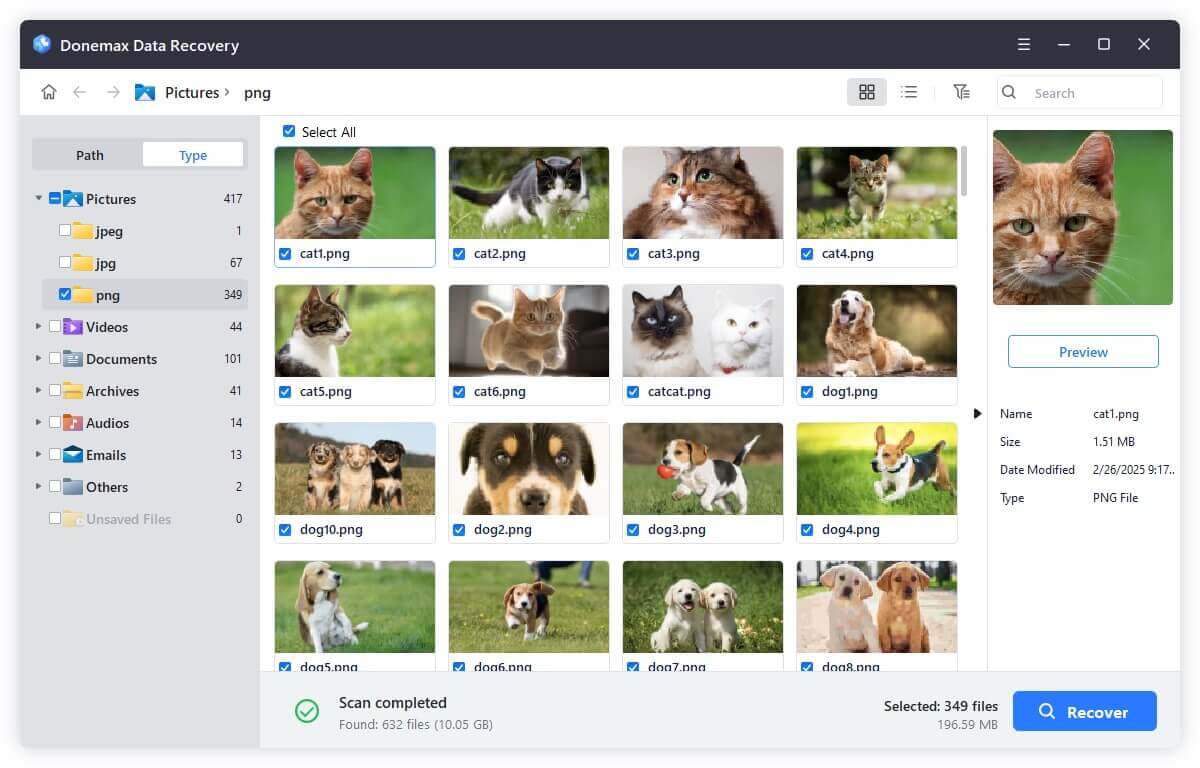
💡 Tip: Install recovery software on a different drive than the one you're trying to recover from.
How to Prevent I/O Device Errors in the Future?
Prevention is better than cure. Follow these tips:
1. Handle Devices Carefully
Avoid physical drops, static, and heat exposure.
2. Keep Your System Updated
Regularly install Windows updates, BIOS patches, and driver updates.
3. Use Surge Protectors
Protect devices from power surges that can damage storage hardware.
4. Always Eject External Devices Safely
Don't just unplug. Use the "Safely Remove Hardware" option in Windows.
5. Maintain Regular Backups
Use external drives, cloud storage, or backup software to keep multiple copies of important files.
Conclusion
I/O device errors can be caused by both hardware and software issues, ranging from a loose cable to serious disk corruption or physical damage. With this comprehensive guide, you now have a clear path to troubleshoot and resolve I/O device errors, recover your data if necessary, and avoid future problems.
Start with simple things like driver updates and connection checks. Then move on to advanced tools like CHKDSK, Device Manager, and BIOS updates. If you're dealing with valuable data, prioritize recovery before formatting or making drastic changes.
By staying proactive and well-informed, you can keep your devices healthy and your data safe.


Donemax Data Recovery
One of the best data recovery programs to recover deleted, formatted or lost data from PC, Mac, HDD, SSD, USB drive, SD card, camera, RAID, Sever or other storage devices.
Related Articles
- May 19, 2025Top 5 Methods to Recover Files Which Are Deleted by Norton
- May 19, 2025Recover Formatted CF Card: Step-by-Step Data Recovery Guide
- Jul 08, 2025Best 4 Methods to Recover Deleted RAF File (Fujifilm RAW Photos)
- Jul 15, 2025[4 Methods] Recover FL Studio Files: Complete Guide to Restoring Lost or Deleted Projects
- Jun 13, 2025Best 5 Methods to Recover Deleted JNB Files
- Jul 02, 2025Recover Deleted RW2 File: Restore Panasonic RAW Images with Ease

Charles
Charles, who lives in Sydney, Australia, is an editor & writer of Donemax Team. He is good at writing articles related with Apple Mac computers, Windows operating systems, data recovery, data erasure, disk clone and data backup, etc. He loves reading and playing tennis in his spare time and is interested in testing new digital devices such as mobile phones, Macs, HDDs, SSDs, digital cameras, etc.

Gerhard Chou
In order to effectively solve the problems for our customers, every article and troubleshooting solution published on our website has been strictly tested and practiced. Our editors love researching and using computers and testing software, and are willing to help computer users with their problems

